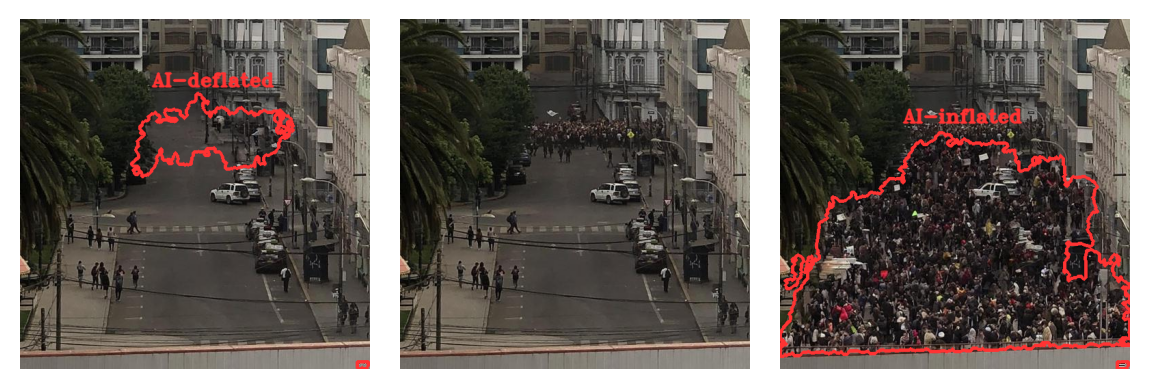Seeing is Deceiving? AI-Manipulated Images and Protest Size Estimates
This project examines the effect of AI-modified images on public perception by examining the effect of manipulated protest images on estimated crowd sizes.

The size of the crowd at large political protests is an extremely political number, since it is usually interpreted as the level of popular support for a regime or a certain political issue. This is particularly the case in autocracies, where protest is one of the few ways for citizens to express their political preferences. Not surprisingly, it is in the interest of political actors to manipulate perceptions of the crowd size, in order to boost support for, or to delegitimize, a particular political issue. This paper studies how perceptions of the crowd size can be manipulated with AI-generated protest images, which, due to the difficulty of detection, is one of the more subtle ways in which AI-generated visual content can be used. In an experiment, participants are asked to rate the size of the protest crowd from a series of social media images. These images are manipulated to display larger (or smaller) crowd sizes using a generative image model. Results show that manipulation works, and that AI-inflated (or reduced) crowd portrayals lead to higher (or lower) crowd estimates as compared to the unmodified images. These results demonstrate the effectiveness of AI-generated visual content in shaping popular perceptions of political events on social media.
Research Article
First insights into the results can be found in the following preprint.
Replication Materials
The code and data for the article are currently available on Github. The final replication materials will be published upon acceptance of the manuscript.

